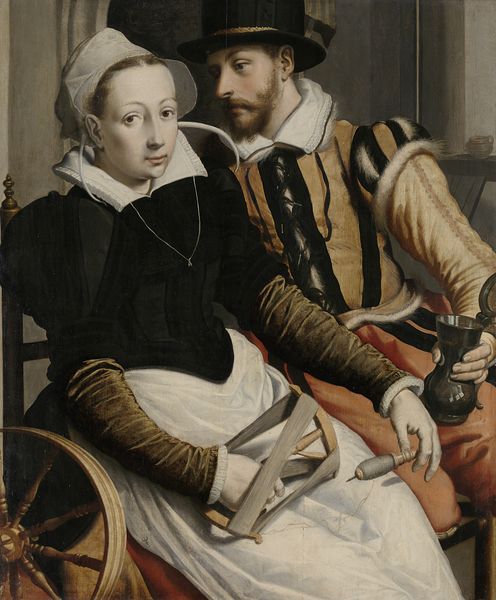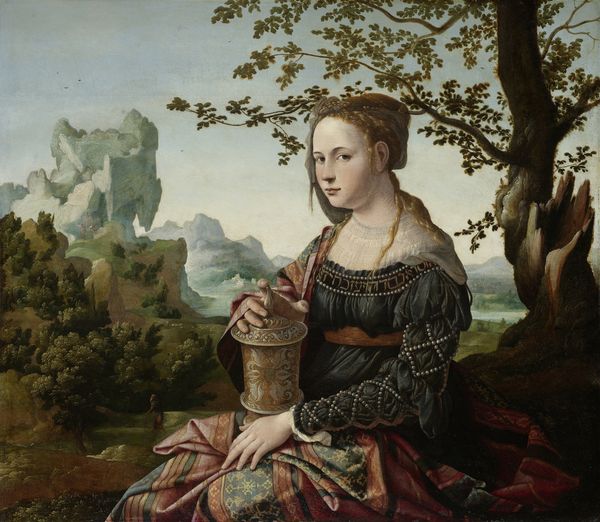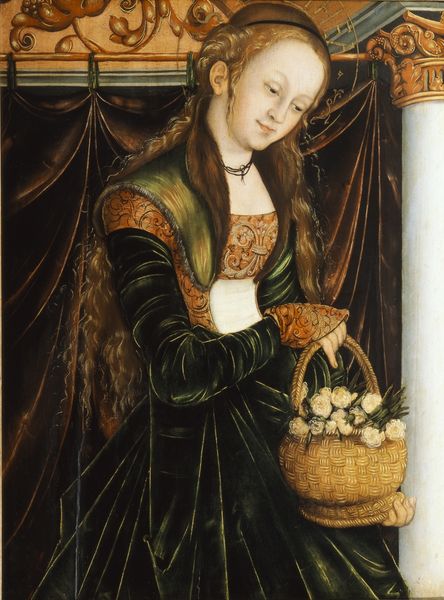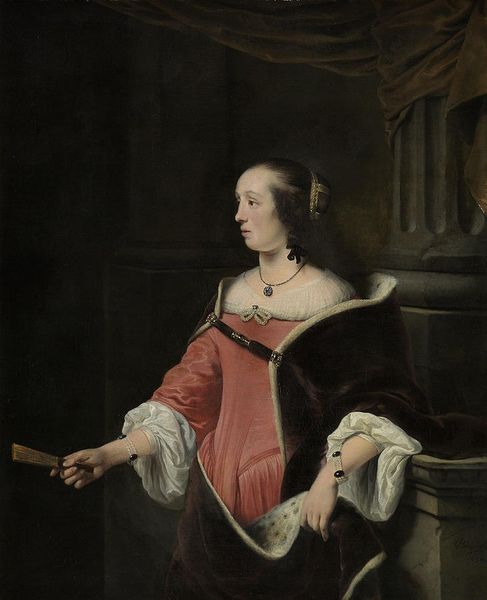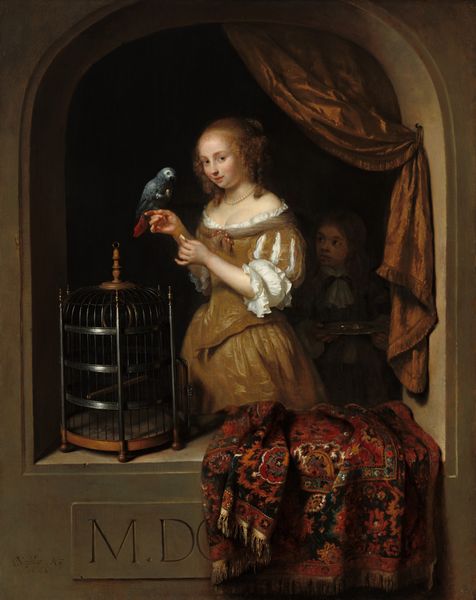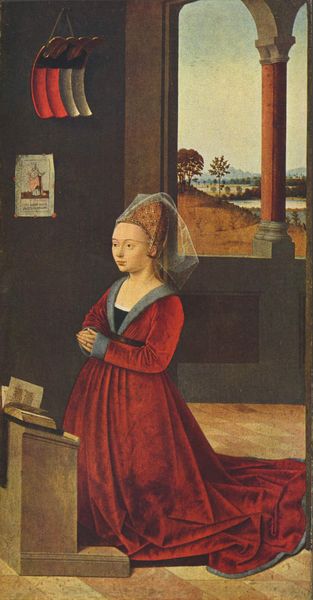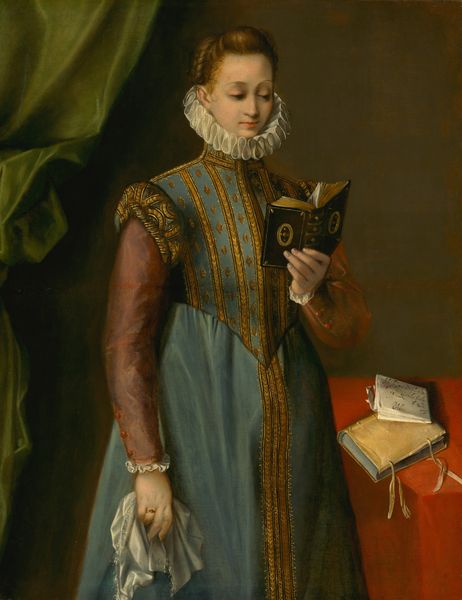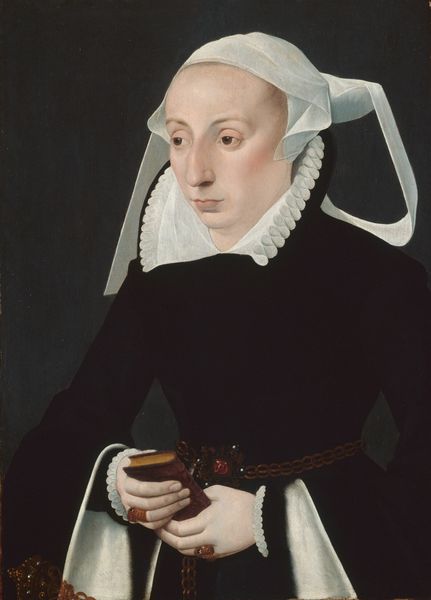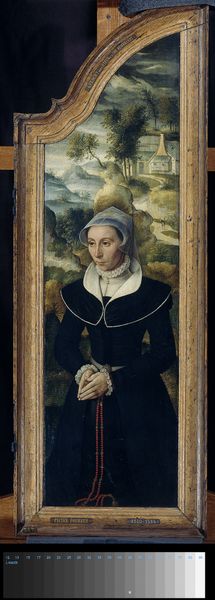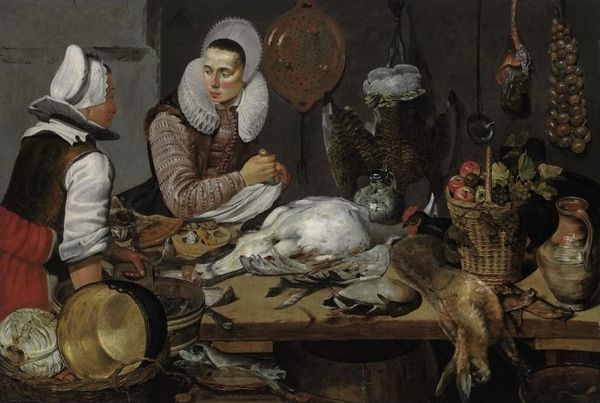
painting, oil-paint
#
portrait
#
portrait
#
painting
#
oil-paint
#
figuration
#
genre-painting
#
northern-renaissance
#
realism
Dimensions: support height 86.6 cm, support width 66.2 cm, frame height 101 cm, frame width 83 cm, frame thickness 5.5 cm
Copyright: Rijks Museum: Open Domain
Editor: This is Maarten van Heemskerck's "Portrait of a Woman, possibly Anne Codde," painted in 1529, using oil. The woman is shown spinning, and I am struck by her somewhat melancholy expression. How do you interpret this work? Curator: I see this portrait as a window into the complex social fabric of the Northern Renaissance. It raises compelling questions about the role of women, particularly within the domestic sphere. This seemingly simple scene of a woman spinning holds within it the dynamics of labor, class, and gender expectations. Editor: Can you expand on that a little? Curator: Consider the act of spinning itself. It’s not just a domestic task; it is also about women’s economic contribution in this historical context. Who was Anne Codde? Was she of a particular social class? Did the action of spinning represent independence or restriction for her? The portrait operates on multiple levels: it’s a record, but also a negotiation of identity. What is emphasized, and what is left out? How does the woman meet our gaze and how can we use cultural and philosophical lenses to analyze these elements of visuality? Editor: That's fascinating! So you are suggesting it might be making a commentary, through her depiction, on societal norms around women and their economic contribution? Curator: Precisely. Art from this period often encodes unspoken truths. To truly engage with this work, we need to unpack the symbols and understand how gender, labor, and class intersect in 16th-century Northern Europe. It’s also worth investigating what spinning may have meant culturally; this was an era of rapid change with the rise of capitalism. Were women being edged out? Were there guild wars around textile creation? Editor: That is incredibly insightful. I hadn't considered all of those possible layers before! It definitely gives me a lot to think about regarding this painting. Curator: That's the beauty of art history. We start with a visual object and journey through layers of history, theory, and social context, revealing new ways of seeing.
Comments
rijksmuseum about 2 years ago
⋮
A man is working on his accounts, while a woman is seated at a spinning wheel. This pair of portraits was probably painted for the couple’s engagement or wedding. He is portrayed as a prudent merchant, she as a diligent housewife. These are two of the earliest portraits of Dutch citizens.
Join the conversation
Join millions of artists and users on Artera today and experience the ultimate creative platform.


